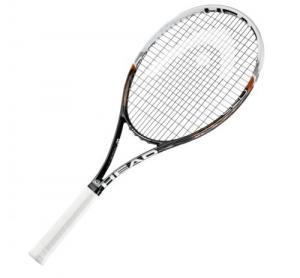Graphene products: introduction and market status
Graphene is a one-atom-thick sheet of carbon atoms in a honeycomb crystal lattice (hexagons), and is the single building-block of graphite. Graphene is exciting researchers and businesses around the world - as it's strong and thin and possesses very interesting properties. Among others, it is the strongest material in the world, while being lightweight and with extraordinary electrical, thermal and optical properties. Graphene has a lot of possible applications in various fields like batteries, sensors, solar panels, electronics and more.
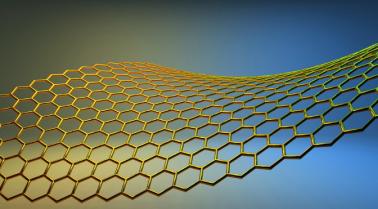
Graphene production
There are dozens of companies that produce graphene (and graphene-based materials). While production volume is relatively small and prices are still high, we already begin to see some commercial applications that use these materials. Hopefully in coming years production volume will increase and prices will drop which will enable more and more products to use graphene based materials.
Commercial products that use graphene
Graphene-enhanced applications and products are starting to appear. The first product to use graphene, as far as we know, is the Siren Technology security smart packaging, which uses Vorbeck Materials's graphene based Ink.
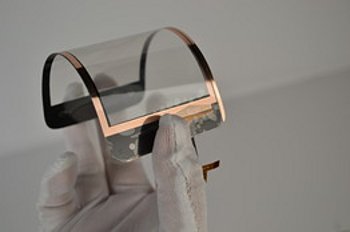
Some companies have announced some graphene based products, we're not sure if these are real yet. Shanghai's Powerbooster Technology claim to have developed a graphene-based flexible touch-panels for mobile devices. They say they are already producing millions of such panels a month, shipping them to mid-sized Chinese smartphone makers. This isn't confirmed yet though.
Composite materials are among the first ways to commercially use graphene, which can bestow beneficial properties upon them like lightness of weight, flexibility, mechanical strength and more. Graphene-enhanced composite materials have started to appear commercially in the field of sports gear.
In the beginning of 2013, HEAD announced their new range of graphene tennis rackets (YouTek Graphene Speed series). These rackets supposedly use graphene to make the shaft stronger and lighter, and HEAD says that the graphene helps distribute the weight better and creates a stronger and better controlled racket. HEAD offers five different rackets, ranging from $170 to $286. It's still not clear what's the material HEAD are using exactly in this product, but it's likely that they are using AGM's graphene flakes.
In 2014, HEAD launched a line of graphene-enhanced skis for women, called Joy, which are meant to be lightweight and durable. The line includes several models, and is currently about 20% more expensive than traditional skis.

International wheel producer Vittoria sells a range of bicycle wheels that are built from graphene-enhanced composite materials. The wheels, called Quarno (Graphene Plus inside) are available in three different editions (46, 60 and 84 mm) and contain graphene nanoplatelets (GNPs) provided by Directa Plus. The company explains that the graphene grants the wheels advantages like heat dissipation (15-30°C lower) – a crucial factor in the slopes, an increase in lateral stiffness (more than 50%) and puncture reduction, especially around the valve area.
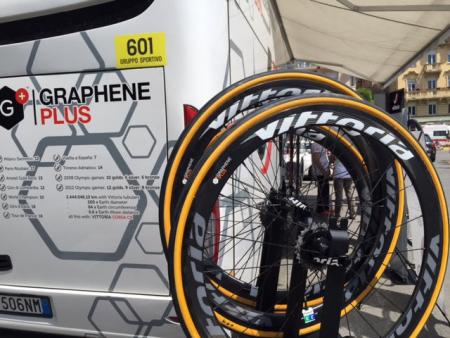
UK-based Dassi Bikes offered what it refers to as "the world's first bike made with graphene". The Dassi bike frame is said to contain 1% graphene throughout six layers underneath the carbon surface layer. The frame weighs just 750g and engineers predict that sub 400g frames could be achievable.
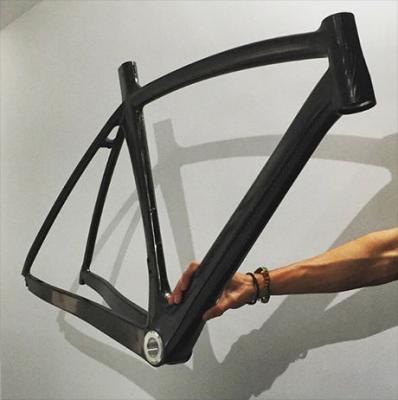
In 2014, A Spanish company called Catlike launched a line of cycling helmets called Mixino 2014, enhanced with graphene. These helmets are said to be light and strong, and offer major improvements in the field of safety and impact absorption. In 2020, Catlike seems to no longer be operational.
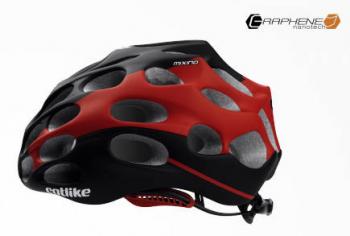
Catlike also launched a line of graphene-enhanced cycling shoes to hit the market around Christmas 2014-2015. The line is called whisper and combines different kinds of cycling shoes (for road, mountain and triathlon biking). The shoes are supposed to provide superior performance by being light and durable.
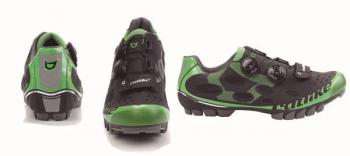
In addition to sports gear, graphene can be incorporated in many other fields and products like sensors, electronics and more.
Applied Graphene Materials announced that it has supplied its graphene material for use in the production of a range of fishing rods, made by UK's Century Composites. Century has unveiled a new range of fishing rods containing the AGM's GNPs, sold under the brand Graphex..
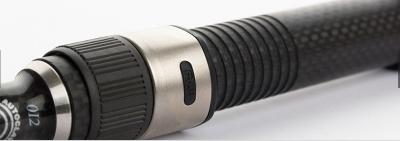
In 2017, Team Group, memory solutions and accessory provider, announced the addition of new products to their existing T-FORCE gaming line of products. Among the new products is the T-FORCE CARDEA ZERO M.2 PCI-E solid-state drive, featuring graphene copper foil cooling on the SSD module allowing the SSD to maximize cooling benefits from both natural passive cooling and directed air cooling via fans to deliver excellent heat dissipation. Utilizing graphene provided by Nitronix and designing combinations of different proportions of graphene and copper foil, the patented graphene copper foil heat spreader was reportedly achieved through stringent multiple verification. It offers excellent thermal cooling effect even in a closed space.
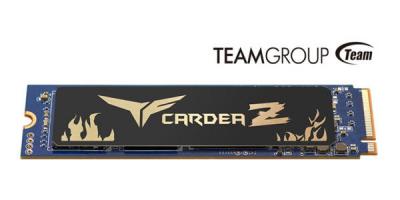
In November 2016, A graphene oxide (GO) sensor co-developed by the ICN2 Nanobioelectronics and Biosensors group was added to the list products offered by Biolin Scientific, a prestigious instrumentation company devoted to the production of analytical devices. The Q-Sense GO sensor enables interaction studies of GO with various analytes (measured substances) of interest and may open the door to various applications with interest for diagnostics, safety/security and environmental monitoring.
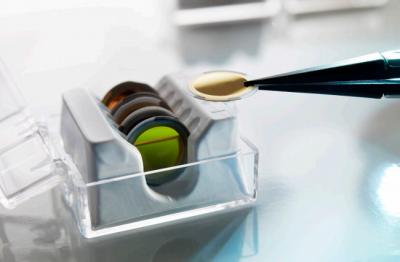
In December 2016, San Diego-based Nanomedical Diagnostics, established in late 2013 to develop cutting-edge diagnostics equipment, started shipping its graphene-based sensors and the AGILE R100 system which allows for real-time detection of small molecules - with no lower size limit. Nanomedical's graphene-based sensors enable faster sample processing, greater accuracy, portability and cost savings.
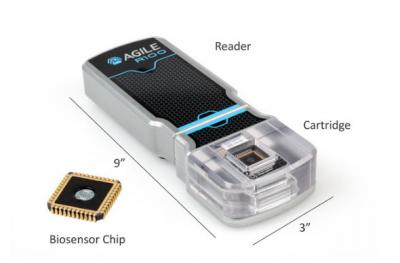
We expect the first graphene-based mass-market products to be touch displays and Li-Ion batteries.
The audio field can also benefit from the use of graphene. China-based FiiO Electronics launched in-ear monitor earphones, the FiiO F3, that make use of a graphene-enhanced diaphragm driver. FiiO says that graphene enabled the development of a thin and flexible driver, which enables the F3 to faithfully reproduce music with a clean, rich, yet transparent high-fidelity sound. The FiiO F3 is shipping in China and in the US.
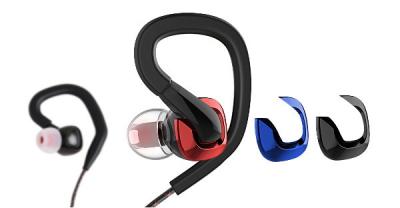
Anker’s audio brand, Zolo, sells its Liberty graphene-enhanced fully wireless earphones. The Zolo Liberty earphones cost $99, which may seem expensive but the company explains that these are wireless and offer a whole-day battery life. It also comes with AI for smart assistance and is sweat-proof (and so suitable for use in fitness activities). The ZOLO promises super clear and immersive sound quality and the graphene-enhanced technology reportedly results in impressive treble and clarity.
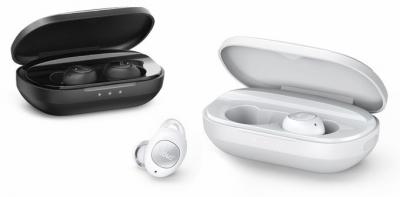
Further reading
GMG launches a graphene solution for the lithium-ion battery industry
Graphene Manufacturing Group (GMG) has announced the launch of SUPER G®, a graphene slurry which can be used to enhance the performance of lithium-ion batteries. This product has, according to GMG, the potential to reshape the future of energy storage, offering battery manufacturers an innovative solution that optimizes efficiency, power, and longevity.

SUPER G® is a graphene slurry which has been developed by GMG over the last 3 years for GMG’s own Graphene Aluminum-Ion Battery which has unique properties of high electrical conductivity, low charge transfer resistance and high density compared to other carbon battery additives and materials used in lithium-ion batteries.
CRX Coatings launches new graphene-enhanced coating for marine applications
CRX Coatings, a Tennessee-based company specializing in graphene-formulated coatings, has entered into the boating industry by launching its new X21 Foul Release Bottom Paint.

CRX Coatings has developed a non-ablative, copper free, biocide-free graphene formula specifically for marine applications. Their innovative approach reportedly ensures maximum performance and durability for boat owners.
Komaki launches electric scooter that is said to use graphene battery
It was reported that Indian electric vehicle brand Komaki has introduced the new model of Cat 3.0 NXT that comes with two battery variants, Graphene and LIPO4, and will be available for Rs. 1,19,999 (around USD$1400) and Rs. 1,49,999 (almost USD$1800). The unveiling of this EV is aimed at last-mile delivery operators, enabling sustainable all-day use and supporting SMEs and MSMEs in growing their businesses.
The EV features app-based battery options, Graphene and LIPO4, giving a range of over 180 km to 200 km on a single charge, depending on the battery type.
Graphmatech launches graphene composites to enhance hydrogen storage
Swedish startup Graphmatech has launched its AROS Polyamide-Graphene composites, which are reported to reduce hydrogen leakage by 83% compared to traditional commercial storage solutions. The graphene-enhanced material will be dedicated to hydrogen storage and transport applications. Graphmatech expects the solution to be implemented in approximately 1,000 light commercial vehicles (LCVs) and 500 heavy commercial vehicles by 2027.
The composite combines polyamide grades with graphene, “effectively blocking hydrogen from escaping while also making the plastic stronger”. Additionally, Graphmatech secured SEK 10 million (almost USD$949,000) from the Swedish Energy Agency to support the development and deployment of a modular mobile pilot-scale extrusion line for its polymer graphene materials designed for hydrogen applications.
DUER launches graphene-enhanced jacket
DUER, an innovative denim company, has launched its new Performance Flannel that is enhanced with graphene. The fabric is said to regulate body temperature without feeling heavy, fight static and stay fresh longer.
“Graphene caught our attention as a Nobel prize-winning nano-fiber with exceptional performance properties that don’t impact a fabric’s weight, breathability, or soft feel,” said Gary Lennett, CEO of DUER. “We’ve integrated graphene into our Performance Flannel to provide enhanced thermal regulation— keeping you warm when it’s cold, and cool when it’s hot. Added to that, it fights static and keeps clothing fresh longer, marking a significant step in the future of textiles.”
The new Alienware Pro Headset will include graphene-coated drivers
Alienware debuted its Pro Mouse and Keyboard in January at CES 2024, and now the company is introducing the Pro Headset as part of the series.
The headphones incorporate various technologies, including 50mm drivers that are coated with graphene to reduce distortion commonly found at higher frequencies.
Xiaomi launches a graphene radiator capable of heating a room in a few seconds
Xiaomi has released its new Xiaomi Mijia Graphene Skirting Board Heater 2, a graphene radiator that boasts a powerful heating system 2.200W and a foldable format. The Xiaomi Mijia Graphene Skirting Board Heater 2 features a graphene heating technology heater capable of providing heat in just 3 seconds and heating an entire room to the desired temperature in just 15 minutes.
In 2022, Xiaomi launched the Mijia Graphene Baseboard Heater (Fire Edition). The device uses two graphene-based heating elements, and has a simulated flame function that uses an integrated humidifier and LEDs to generate the flame appearance. This new launch seems to be the next generation in the same product line.
Mito Materials Solutions and St. Croix Fly announce product line expansion of graphene-enhanced fly fishing rods
Mito Material Solutions has announced a product line expansion by core sporting customer St. Croix Fly. In October 2023, Mito shared how the fly fishing rod company incorporated its functionalized graphene into the composite rods to enable faster recovery, increase torsional rigidity and improve strength-to-weight ratios.
St. Croix’s Technica Series rods were conceived and delivered to give anglers “the upper hand in the trickiest of trout-fishing situations.” Its responsive, moderate action, paired with the use of carbon fiber and Mito’s graphene technology, adds to the line’s speed, endless loop stability and accuracy.
Gerdau Graphene unveils 'NanoCONS' line of graphene admixtures for concrete
Gerdau Graphene has launched “NanoCONS,” a new line of graphene admixture solutions designed for the construction industry, meant to enable concrete producers to leverage the physical properties of graphene to improve the mechanical performance of their concrete products.
The integration of NanoCONS into cementitious materials may also reduce carbon emissions associated with concrete production: according to recent research on graphene-enhanced concrete, reducing cement content can lower concrete manufacturing-related emissions by up to 20%. NanoCONS can help reduce cement consumption without any loss of concrete performance, thereby contributing to more sustainable concrete production.
Black Swan Graphene launches its fourth commercial Graphene Enhanced Masterbatch product
Black Swan Graphene has announced the release of its fourth commercial Graphene Enhanced Masterbatch ("GEM") product, as it continues to deploy broad commercialization efforts.
This new thermoplastic polyurethane ("TPU") masterbatch is an addition to the GraphCore 01 product line. TPU is a versatile polymer that combines the properties of rubber and plastic, making it an ideal material for a variety of applications ranging from industrial to consumer goods; inflatable products are particularly well suited for this new GEM. Using this new GEM, Black Swan has reportedly demonstrated a 25% improvement in light weighting capability, along with other mechanical performance improvements.
Pagination
- Page 1
- Next page
